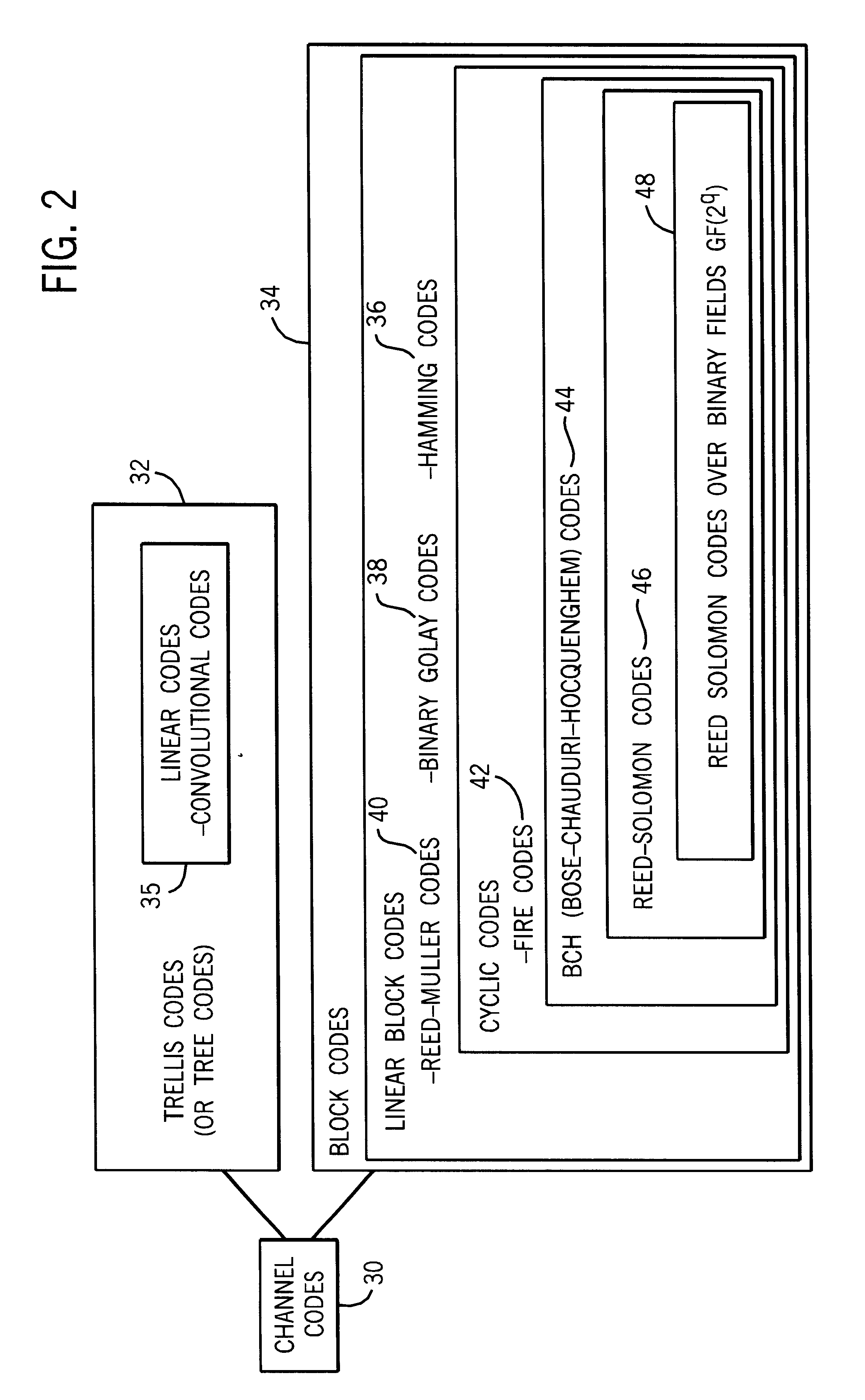Electronic identification system with forward error correction system
a technology of error correction and electronic identification system, which is applied in the field of electronic radio frequency identification system with forward error correction system, can solve problems such as noise burst, message burst, and temporary overload of radio receiver of interrogator
- Summary
- Abstract
- Description
- Claims
- Application Information
AI Technical Summary
Benefits of technology
Problems solved by technology
Method used
Image
Examples
Embodiment Construction
An electronic radio frequency identification (RFID) system according to the invention is generally designated by the reference numeral 10 in FIG. 1.
The system includes an interrogator or reader 11 and a plurality of similar transponders numbered transponder #1 to transponder #n and designated 12.1 to 12.n respectively. In use, the interrogator is caused to transmit an interrogation signal 14 via transmitter 15. The transponders are energized by the interrogation signal and they are caused to respond to the interrogation signal by backscatter modulation of the interrogation signal with a forward error correctable data message (which will be described in more detail hereinafter) to form response signals 16.1 to 16.n.
In use, the interrogator sequentially latches onto one of the response signals, receives the signal via receiver 18 and reads the data message. The data message is then processed as will hereinafter be described by a data processor 20 of a controller 22 of the interrogator...
PUM
 Login to View More
Login to View More Abstract
Description
Claims
Application Information
 Login to View More
Login to View More - R&D
- Intellectual Property
- Life Sciences
- Materials
- Tech Scout
- Unparalleled Data Quality
- Higher Quality Content
- 60% Fewer Hallucinations
Browse by: Latest US Patents, China's latest patents, Technical Efficacy Thesaurus, Application Domain, Technology Topic, Popular Technical Reports.
© 2025 PatSnap. All rights reserved.Legal|Privacy policy|Modern Slavery Act Transparency Statement|Sitemap|About US| Contact US: help@patsnap.com



